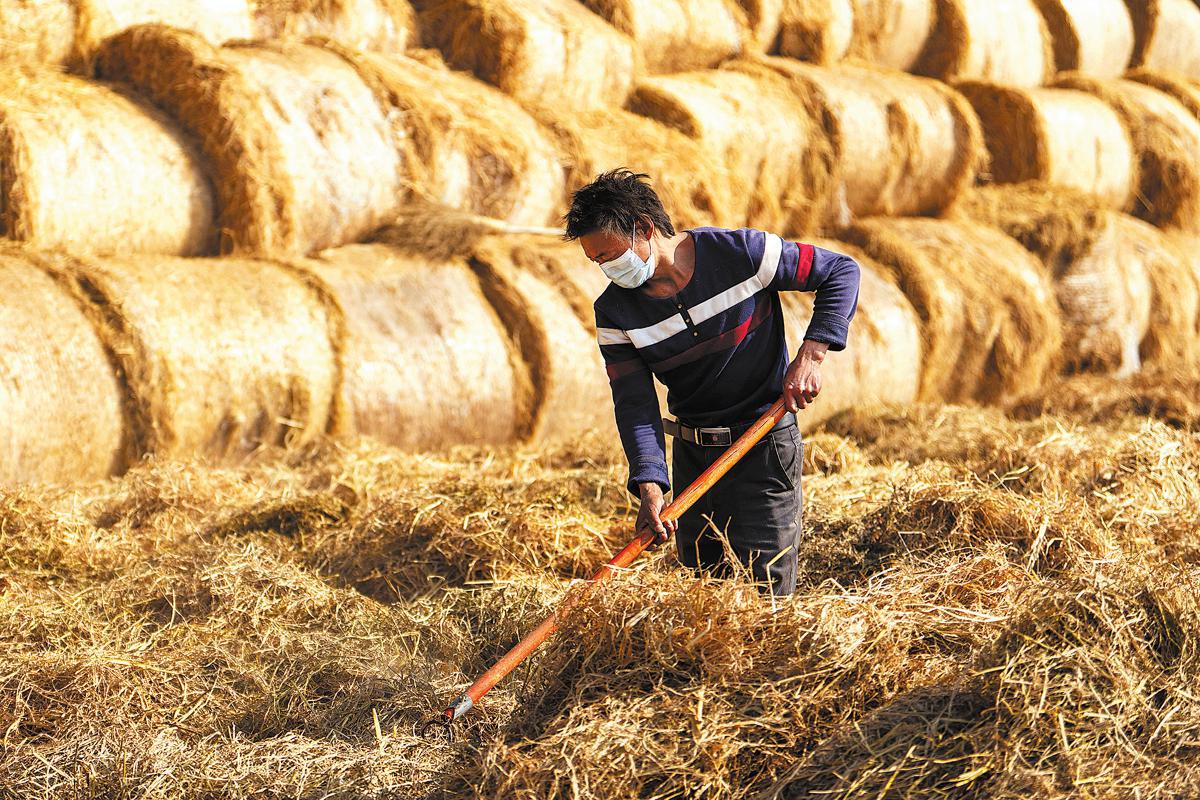Farm waste turned into biofuel produces healthy profit
Transformation of recycled straw contributes to green transition in grain-growing provinces






By fully utilizing waste from the agriculture, forestry and livestock sectors, the province expects the biogas industry to thrive and become a key emerging sector for renewable energy.
Heilongjiang has encouraged its major livestock farming counties and grain-producing areas to integrate the harmless treatment of livestock and poultry manure with the comprehensive utilization of straw for biogas demonstration projects.
The commission highlighted the establishment of a complete biogas industrial chain as a priority in its work regarding biogas development.
Aside from accelerating the development of key biogas-producing technologies tailored for cold regions like Heilongjiang, the province has also intensified efforts to establish comprehensive systems for raw material collection and biogas consumption, the commission said.
While it provides a much greener alternative for export-oriented enterprises that consume natural gas, biogas has been integrated into urban natural gas networks and is also used for electricity generation and the production of green methanol.
To date, seven biogas production projects have been put into operation in Heilongjiang, the combined annual capacity of which has reached roughly 50 million cubic meters, the commission said. Another six projects with a total annual production capacity of 28 million cubic meters are still under construction.
Once the six projects are completed, the biogas-producing facilities in the province will be able to annually consume 640,000 tons of straw and harmlessly treat 1 million tons of livestock and poultry manure, it said.
The commission said Heilongjiang already boasts several key enterprises with proprietary technologies for biogas production, including Heilongjiang Boneng Green Energy Technology Co.
Boneng plans to establish 30 centers utilizing its dry anaerobic fermentation technology to produce biogas by 2028, according to Shi Hongying, the company's general manager. Each of the centers will have an annual capacity to dispose of 70,000 to 100,000 tons of livestock and poultry manure and 30,000 to 50,000 tons of straw, outputting 4 million cubic meters of biogas.
Shi noted the company's remarkable progress in implementing the plan, saying that 12 of the centers are either already operational or under construction, with another eight in the planning stages.
Shi emphasized that the company's technology creates substantial climate and economic benefits.
Adaptable to the low-temperature environments of cold northern regions, the technology enables continuous production throughout the year in Heilongjiang, she noted.
Using biogas as a raw material, the company also produces bio-methanol through chemical synthesis. "Both the company's biogas and bio-methanol products received the International Sustainability and Carbon Certification for the EU (ISCC EU) in 2024, making it the first green new energy company in China to attain this certification," she said.
Methanol, a key raw material in the chemical industry, is a chemical building block for hundreds of everyday products, including plastics, paints, car parts and construction materials. However, it is currently mainly derived from fossil fuels.
The manager said the residue from the company's biogas production process will be made into organic fertilizer or artificial black soil, which can be used for soil improvement.
Once operational, the company's 30 centers will be able to annually process 2.1 million tons of manure and 1.5 million tons of straw, she said. In addition to reducing carbon dioxide emissions by 3 million tons per year, the company will also capture 180,000 tons of greenhouse gases for industrial use.
Each of the centers can generate an annual revenue of 15 to 18 million yuan ($2.1 to 2.5 million) from producing biogas, based on a natural gas price of 3.8 to 4.5 yuan per cubic meter, she said.
"In recent years, the government has been promoting a shift in energy consumption from coal to natural gas, and the relatively stable price of natural gas has ensured consistent revenue," Shi said.
As one of the 13 major grain-producing regions in China, Hubei province has also been forging ahead with the utilization of waste from its agricultural and livestock sectors for producing biogas and organic fertilizers.
According to the office of the province's leading group for rural energy development, Hubei will allocate 50 million yuan in special funds this year to support 50 villages in areas with well-developed farming and livestock industries to carry out demonstration projects.




















